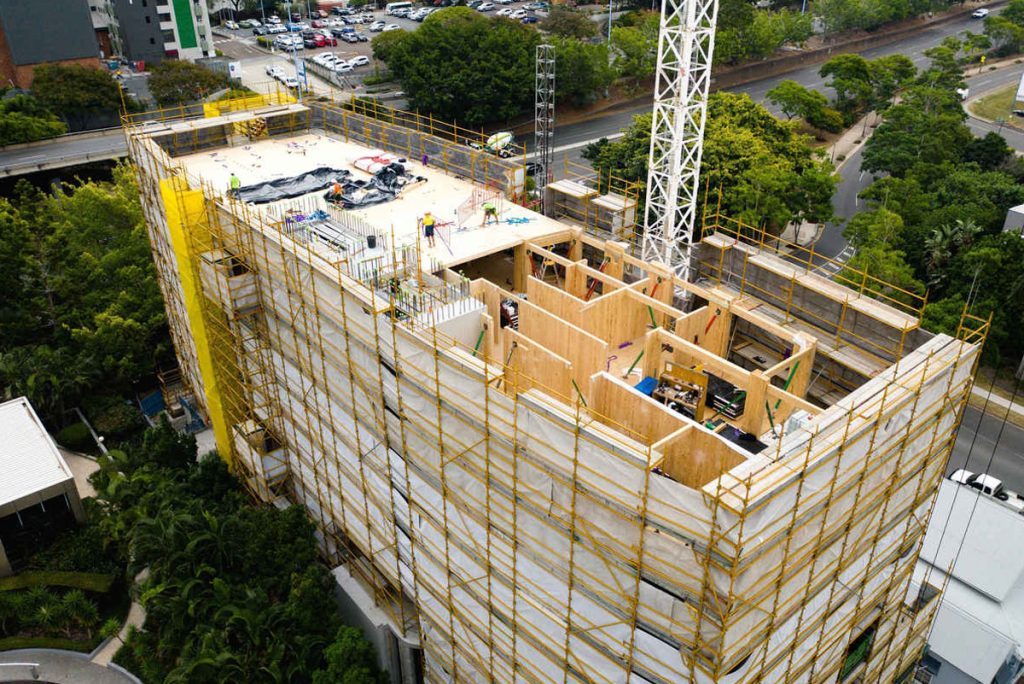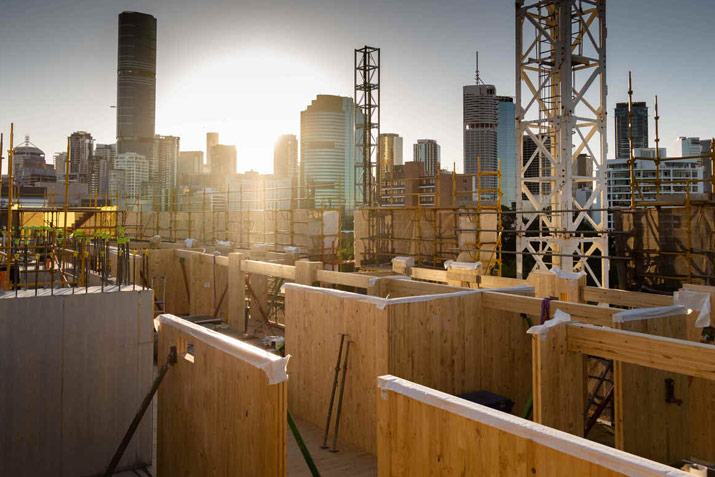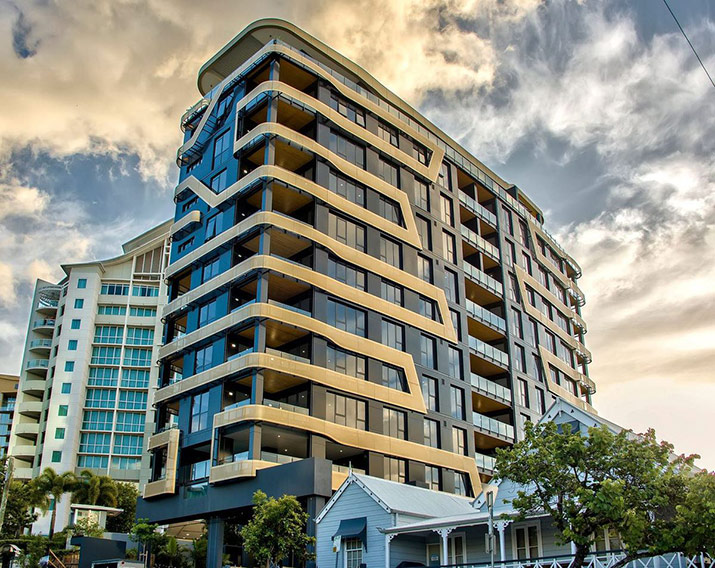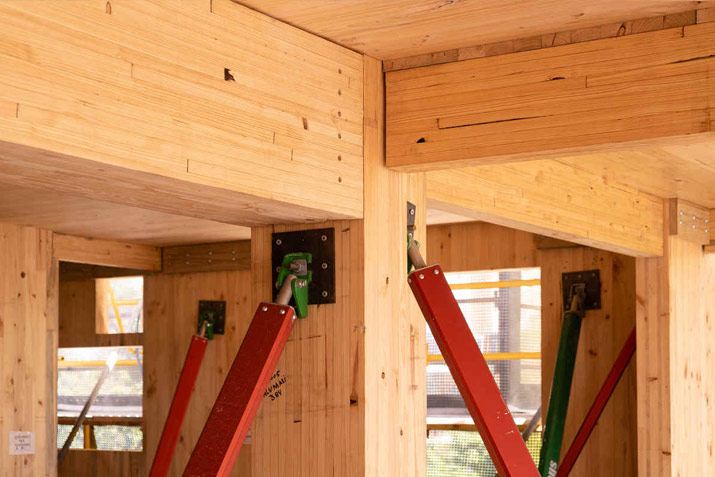Sign up to the Built Offsite Newsletter

Xlam’s expertise in CLT enables developer to fully realise sites potential
From high strength to a lighter environmental footprint than concrete or steel, the benefits of cross-laminated timber (CLT) are proven. But for a recent development in Brisbane, CLT’s ability to create a unique build on a challenging site, using innovative materials and methods, proved beneficial to the forward thinking client. And strong team engagement from project inception enabled highly detailed design and specifications, as well as building sequences, to be resolved at the outset, a critical success factor for CLT.
Located in Lambert St, Kangaroo Point, the Monterey at Kangaroo Point by Brisbane-based developers GVG (Gardner Vaughan Group), comprises 10 storeys and 29 apartments. Featuring a heated plunge pool and gym, and a barbeque/recreational space on the rooftop, the development is positioned as high end inner city accommodation.

Central to the development and overall buildability was the use of cross-laminated timber. XLam has been producing CLT locally for 4 years, and is part of the Hyne Timber Group which has a 140 year history in the Australian timber industry. Xlam is regarded as a specialist in the use of timber in construction as a primary structural material, resulting in its selection by the project’s builder.

The case for CLT
The development site was challenging in that a section of proposed building was situated over the CLEM7 tunnel which placed restrictions on the weight of the proposed building.
Callum Lilywhite from Aurecon, the projects structural engineer said: “The driving factor behind Monterey being timber is weight as the ‘backside’ of the building is over the Clem7 tunnel; it’s literally over the top of the tunnel. Using traditional concrete or even steel we were likely to only get around five to six storeys out of it; that just not be commercially viable for GVG.
By actually doing this in timber and using the benefits of timber being such a lighter structure, we’re able to go to ten storeys which actually makes the project stack up financially.”

The project was built with a concrete core, and Callum remarked: “We did a lot of analysis at the start to see if we could do it in timber; the problem is that the layout of this building has an offset core. It’s a long skinny building, so there are some pretty high torsion loads. But, from a pure structural point of view, it could be done but it was going to be quite difficult.”
XLam’s CLT panels were ideally suited to the unique demands of the project as, “we ended up with all of our panels running north-south, which in terms of installation, we started at one end and worked to the other end. We could actually fit the whole width of the building in on one panel which just made speed onsite really quick”.
The CLT floor panels for each level were able to be installed in one day with the walls and supporting beams for the next level taking a further 3 days.
Fewer workers were required on site for installation which also assisted the builder to comply with social distancing measures to combat COVID-19.
CLT: 100% renewable resource
The environmentally-sustainable build is the second Urban Development Institute of Australia accredited EnviroDevelopment for the GVG.
Monterey will replace 1170 cubic metres of traditional concrete and blockwork for Australian timber, reducing CO2 emissions by 3744 tonnes which is the equivalent of taking 700 petrol cars off the road for a year.
This substantial carbon off-set together with unparalleled renewability, low embodied energy and minimal operational energy made the mass timber solution an environmentally preferable choice.
Interestingly, Australian plantation forestry can regrow timber used for Monterey in under 20 minutes.

Building performance – mass timber
The decision to use CLT delivers further benefits with its inherent thermal capabilities and providing thermal mass; it provides 15 times more insulation than masonry and 400 times more than steel. CLT wall panels further enhance the Monterey’s ability to create air-tight compartments, with additional heating and cooling energy reductions as well.
And, despite being five times lighter than reinforced concrete, the glue laminated timber used as column elements in the Monterey have similar compressive capacity to 32MPa concrete columns.
On reflection of the development, GVG’s sales director, Sam Gardner, said developing, building and managing Monterey showed the company’s commitment to meeting buyer expectations for a quality eco-build.
“It’s important to the end user to provide them with a community space, something that will drive the values of the community,” Mr Gardner said.
“We’ll be the caretakers of the building because we really do care, and we want to get the community firing.”
See: www.xlam.co.nz
See: gardnervaughangroup.com.au
Click Here to return to the home page for more articles.